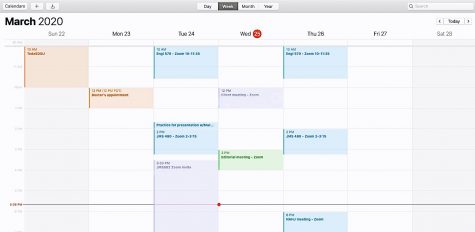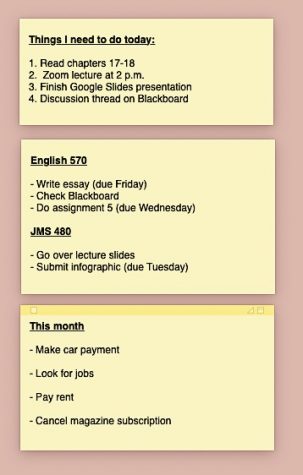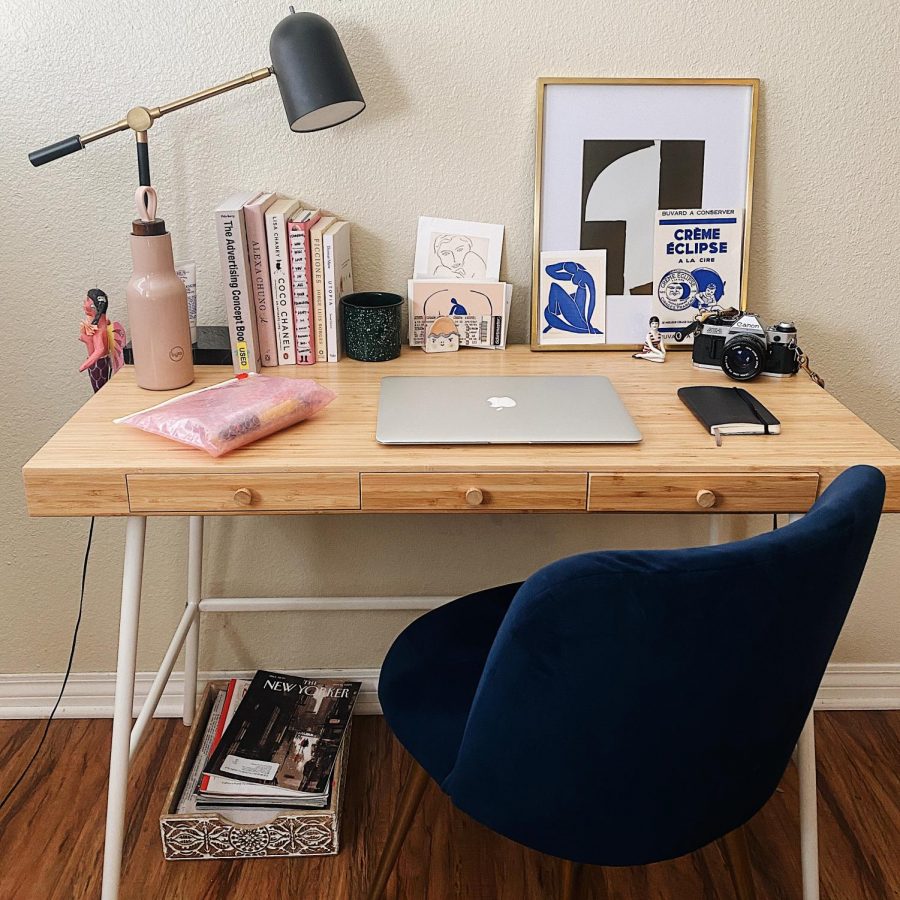Loud neighbors, slow wifi and a pet that’s too cute to ignore are just a few of the obstacles that might stand between you and the work that has to be done at home now.
Unlike in-person classes, which were canceled at San Diego State in response to the COVID-19 pandemic, most Zoom lectures, assignments and projects still stand firm on the syllabus.
This leaves us no choice but to work from home, where distractions can’t be as easily avoided.
Working from home can be challenging to some, as the shift to virtual learning is still fairly new. Nonetheless, there is hope and most importantly, tips you can follow to stay productive while under quarantine.
Tip 1: Establish a workspace
Assigning a specific area in your home as your new work area can go a long way when trying to get stuff done. It might be easier to focus if you have that one place you can call your official “workspace” you can return to every day.
Your new workspace doesn’t have to be as dull as it might sound. You can get creative with your space by hanging up posters and organizing your books and school supplies to make the nook more inviting.
It might also be best to avoid using your bed because chances are, you will probably start to get too comfortable and want to take a nap if you try to do work in the place you usually rest in.
You should try to separate your place of work from your place of rest. This way, you’ll feel like going to bed is still a reward, and you can experience that feeling of going “home” even though you, technically, never left.

Tip 2: Use a calendar, make a schedule and stick to it
This tip will not only help you be more productive but will teach you some time management and planning skills as well.
It’s simple. Use a calendar — digital or print — and jot down what you plan on doing during the day or week.
Seeing your daily schedule visually might bring you some comfort and even a sense of control. Just like if you were planning your week on campus, make a schedule with your online classes, at-home-workout and projects you’ve been wanting to work on.
Google and Apple both have calendars you can view from your computer and phone. You can also look into buying a printed calendar that speaks to your own aesthetic if you prefer having something physical to look at.
Color coding your events, playing with fonts or pens and using stickers can help, too. Again, getting creative with these tips can make working from home a little more exciting.

Tip 3: Make to-do lists you’ll actually finish
A lot of us make to-do lists but never actually complete them or take a long time to finish every task on them. This is because you might be making the wrong type of to-do list.
Using sticky notes, a notebook, the notes app on your phone or any blank sheet of paper, make a list of the tasks you want to complete either that day, week or month.
Then, decide how you want to organize your tasks. You can prioritize certain activities by ranking your tasks from most important to least important. You can also break them up by category such as school, work, personal and more. You can catalog each task under the corresponding school course if it applies.
Don’t forget you can have multiple lists instead of just one really long one. It might make it easier to get work done if you break up your tasks into shorter, more doable lists. Keeping each list simple and easy to read might take off some stress as well.
There are also time-based lists where you set a time limit for each task. For example, you can make a list that includes three tasks that only take a few minutes to complete and one big task that might take an hour to finish.
Using bullet points, checkmarks and colors can make your lists more organized and aesthetically appealing.
Tip 4: Work in different places (at home)
A reason why you might feel unmotivated to work from home is because of the feeling that you’re restricted to one workspace as opposed to being able to go to the library or coffee shop.
This doesn’t have to be entirely true. While we’re not encouraged to leave our houses, you still have the freedom to work in different areas within your home.
You can start your day at your desk, complete some tasks there and then go to your couch or dining table and continue working. If you have a front porch or a backyard, you can always use that additional space.
Switching from place to place throughout your day might help you keep your mind and body active. It can also bring more inspiration to your assignments because movement works to mask the feeling of being constrained to work in one spot.
Tip 5: Take a break, get some fresh air
A lot of people might forget about the last and, arguably, the most important tip when it comes to being productive: taking a break!
Set some time apart to let your mind rest and relax. Taking a break can give you clarity and energy — two things that might help you stay motivated during this period of self-isolation.
Going for a brisk walk, watching some TV or having a snack can work wonders if you’ve been at home working all day. Just remember that everything works best in moderation. If it helps, set a timer, enjoy your break and resume working. Only this time, you’ll hopefully feel more energized and ready to go.
Working from home might sound like a drag right now but there’s always a light at the end of the tunnel. And who knows, maybe you’ll end up preferring to work from home more than working elsewhere after you adjust to the shift.










